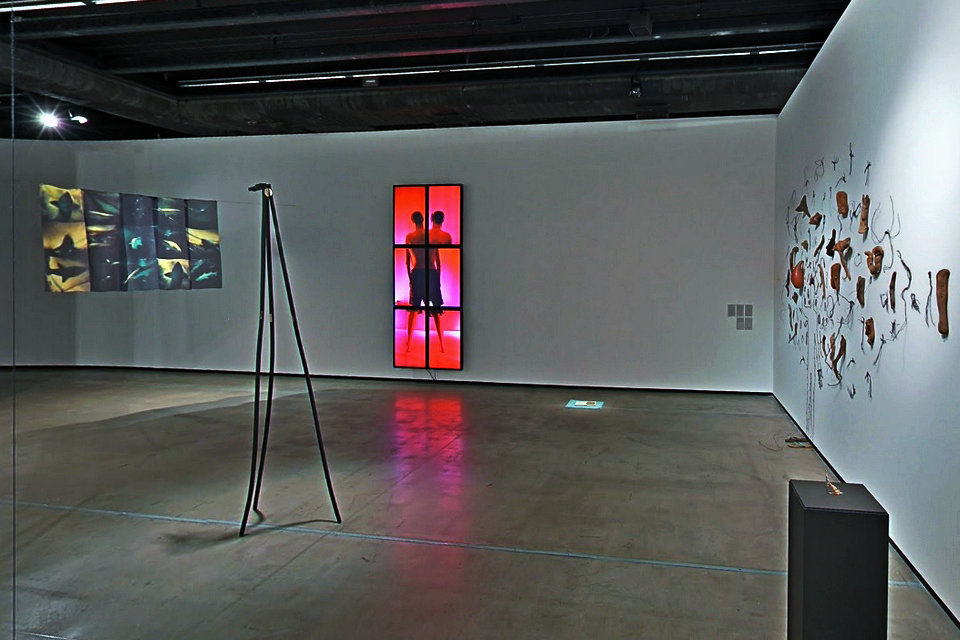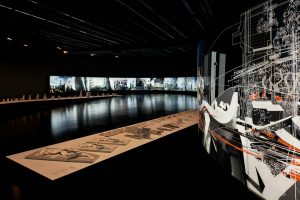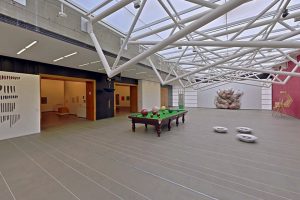Faced with urgent humanitarian issues, the Tomie Ohtake Institute offers itself as a platform for the realization of a unique project, by uniting the territories of Art and Justice, in partnership with the Defense of the Right of Defense Institute (IDDD) and with membership of a group of artists.
In OSSO – Exhibition-appeal to Rafael Braga’s broad right of defense, the works gathered and the debates proposed are intended to illuminate the theme highlighted in Brazilian society: equality of basic constitutional rights.
The Tomie Ohtake Institute seeks to include in its program proposals that, in addition to visual arts, reach other fields of culture, such as literature (José Saramago: the consistency of dreams); theater (Arena tells Arena 50 years), cinema (Kurosawa – creating images for cinema) and science (Art and Science – Us between extremes).
The exhibition
For the exhibition, the curator of the Tomie Ohtake Institute, Paulo Miyada, invited and had the immediate adhesion of 29 of the most relevant Brazilian artists. The title “bone” is justified by the choice of works produced from minimal elements, which can allude in a synthetic way to the fragility and crudity of this issue “the right of defense”. According to Miyada, “The sensitive experience of this exhibition will be one of vastness and emergency: walking around a wide space punctually occupied by precise propositions – sometimes punctual as a touch, sometimes sharp as a scalpel. They are not just works-discourse, but works-attitude ”. All artists responded directly to the invitation to integrate the exhibition with this cause.
About two thirds of the artists participate with existing works, the rest with unpublished works or those made especially for the exhibition. Cildo Meireles, for example, shows Cruzeiro do Sul (1969), a 9 mm wooden wooden cube presented directly on the floor in an empty room; it consists of a section of pine and the other of oak, woods used by indigenous peoples to produce frictional fire. Carmela Gross will remake the graphite drawing on the Águia wall (1995), originally part of the artist’s installation in the former Santos Municipal Prison. Paulo Bruscky will symbolically remount the exhibition in which he presented his Nadaísta Manifesto (1974) – launched at the time as a form of silent protest against censorship. Nuno Ramos will show Balada (1995/2015) 896-page blank book pierced by a pistol shot,
In the group of guests, there are representatives from different generations and regions of the country – from Bené Fonteles (1953, Bragança, Pará. Lives in Brasília) to Gustavo Speridião (1978, Rio de Janeiro), for example. A significant portion of the participants stands out for their continued dedication to debates on prejudice and violence, such as Rosana Paulino, Jaime Lauriano, Paulo Nazareth, Dalton Paula and Moisés Patrício.
List of participating artists: Adriano Costa, Alice Shintani, Anna Maria Maiolino, Bené Fonteles, Carmela Gross, Cildo Meireles, Clara Ianni, Dalton Paula, Fabio Morais, Fernanda Gomes, Graziela Kunsch, Gustavo Speridião, Ícaro Lira, Iran do Espírito Santo, Jaime Lauriano, Jonathas de Andrade, Maria Laet, Miguel Rio Branco, Moisés Patrício, Nelson Félix, Nuno Ramos, Pablo Lobato, Paulo Bruscky, Paulo Nazareth, Raphael Escobar, Rosana Paulino, Sonia Gomes, Tiago Gualberto and Vitor Cesar.
In addition to the works on display, in an attached room, documents directly and indirectly linked to the case of Rafael Braga will be presented – the compilation and editing of data and texts is also the result of the partnership between the teams of the Tomie Ohtake Institute with IDDD.
Rafael Brage
The young black man from Rio, was a picker of cans when, in the June 2013 demonstrations, he was taken to prison for carrying two plastic bottles, one for disinfectant and the other for bleach. The prosecution said that he carried flammable materials that would be used to produce explosives, but whose incendiary aptitude was challenged by a report by the Bomb Squad of the Special Resources Coordination of the Civil Police. Even so, Rafael was the only Brazilian citizen arrested in the context of the acts who was sentenced to prison. Sentenced to four years and eight months under a closed initial regime, in December 2015, he progressed to the open regime, for fulfilling the legal requirements.
Rafael worked as a general services assistant in downtown Rio de Janeiro and used an anklet when, in January 2016, he was arrested again. According to the police version, the young man was walking through Vila Cruzeiro, north of Rio de Janeiro, when he was reportedly caught with 0.6 g of marijuana, 9.3 g of cocaine, in addition to a rocket. Rafael, who denies all charges, claims to have been a victim of violence and police extortion. There are disputes about the veracity of the act and there was a contradiction between the statements of military police, the only witnesses to the accusation. The defense witness, who says that Rafael did not carry drugs at the time of his arrest, had his testimony discredited by the judge. At the end of April 2017,
Despite the accumulation of misfortunes that contributed to the relative publication of this case, it is not isolated in Brazilian statistics. For Hugo Leonardo, vice-president of IDDD, “the youth is a symbol of the growing Brazilian prison population. Rafael’s story is similar to that of so many other young people who are unable to escape an increasingly broad and violent criminal law. Rafael also represents the distressing cyclical fate of the peripheral population egressed from the prison system ”.
IDDD
In July 2000, concerned with intolerance to the right of defense and the presumption of innocence, the Institute for the Defense of the Defense of the Right (IDDD), a public interest civil society organization, was founded by a group of criminal lawyers.
Since its foundation, the main challenge of the IDDD has been to sensitize society to the care that should be taken with unfair accusations and timely judgments, demonstrating that this precaution is a criterion to move us away from a totalitarian and oppressive state. And that this is the assumption of human freedom, which cannot be relaxed in any way, under the risk of putting democracy itself at risk.
For IDDD, presenting the need for this debate to society, means providing a wide discussion about what the criminalization process is and how criminal law and mass incarceration are the greatest demonstrations of the worsening of social conflicts.
Tomie Ohtake Institute
Instituto Tomie Ohtake, opened since 28 November 2001, is one of the few spaces in São Paulo to have been designed with the specific purpose of staging national and international art, architecture and design exhibitions.
Honoring the artist it was named after, the Institute is home to exhibitions that shine a light on artistic developments over the past six decades, as well as on earlier artistic movements that contribute to a better understanding of the period in which Tomie Ohtake lived and worked. Since opening its doors to the public, the Institute has staged shows previously unheard of in Brazil, including Louise Bourgeois, Josef Albers, Yayoi Kusama, Salvador Dalí, and Joan Miró, among others.
As well as its trailblazing exhibition program – amplified through a parallel program of debates, research, content production, archival work and publications – Instituto Tomie Ohtake has, since its founding, conducted significant research on approaches to teaching contemporary art. This is manifested in pioneering new training methods for teachers and students in public and private schools, a program of events open to all, and projects designed to encourage new generations of artists to develop and thrive.







